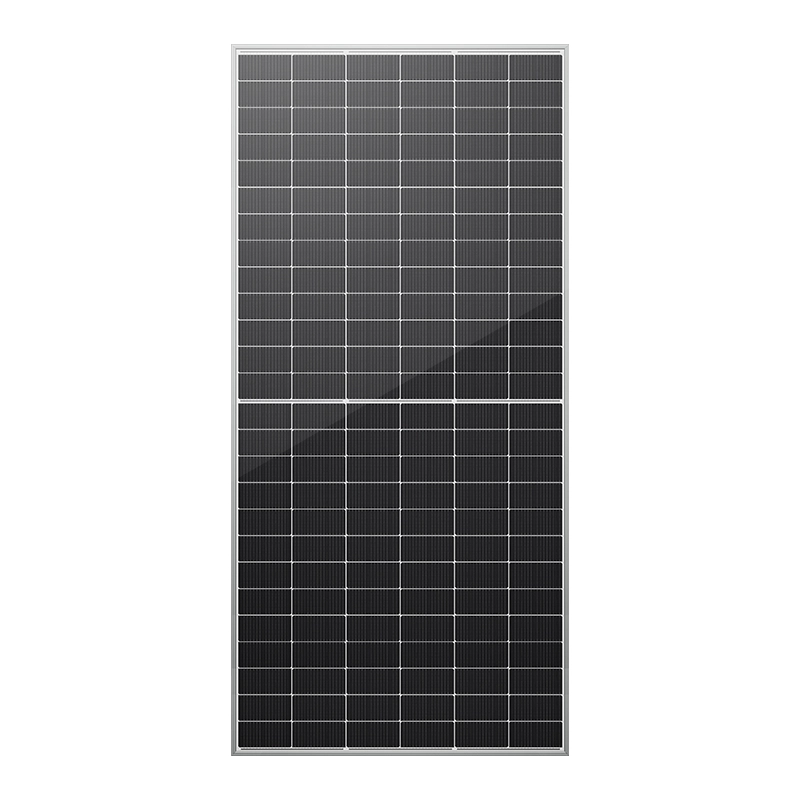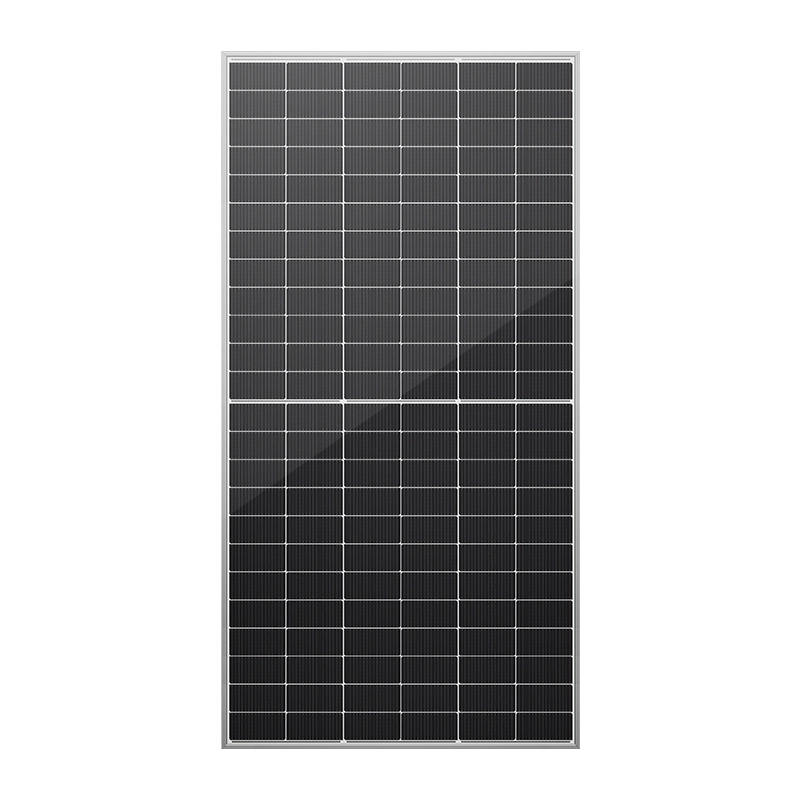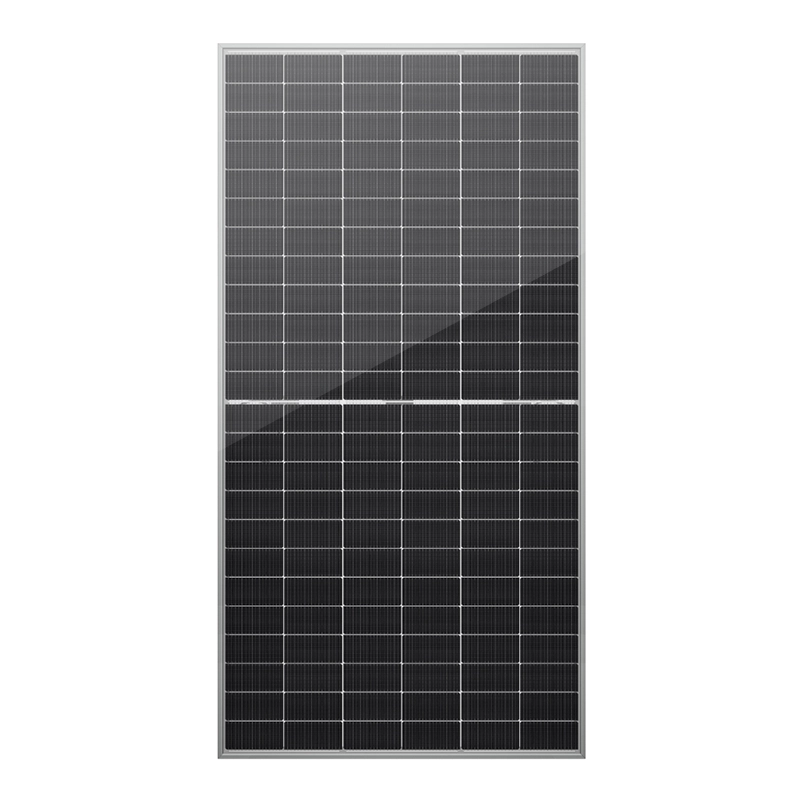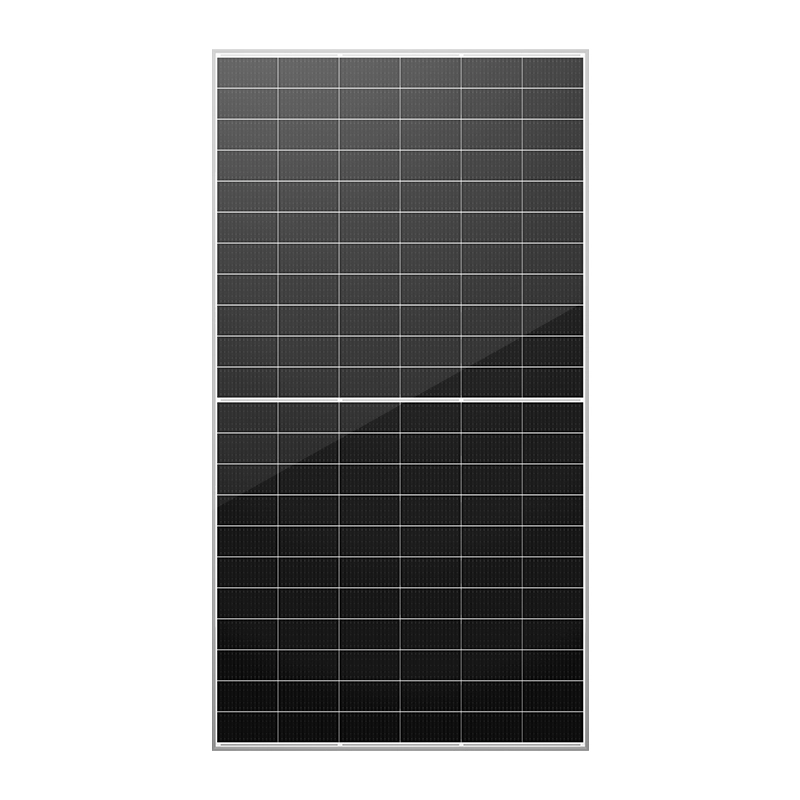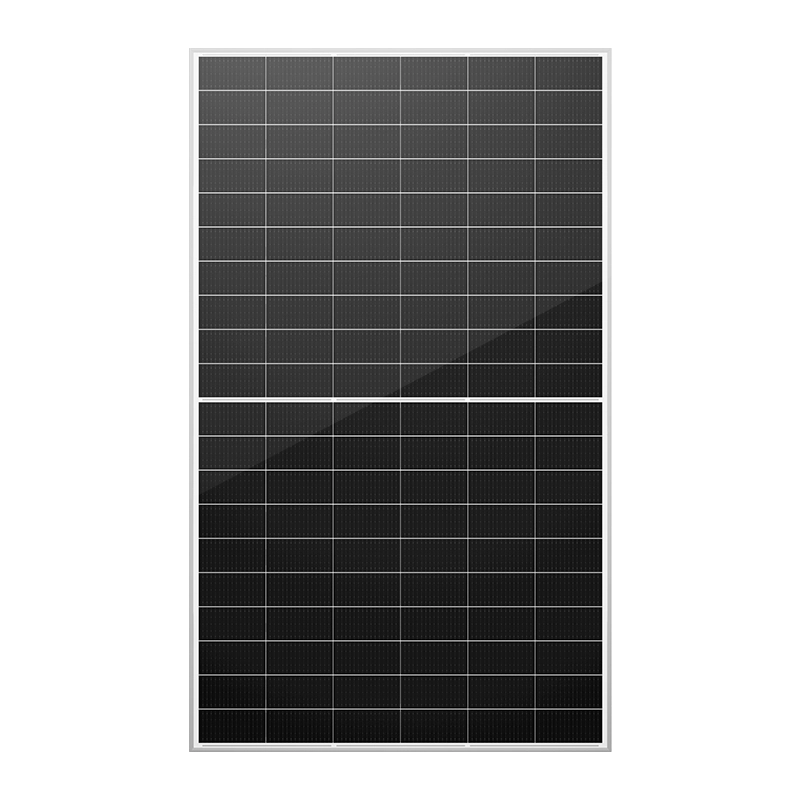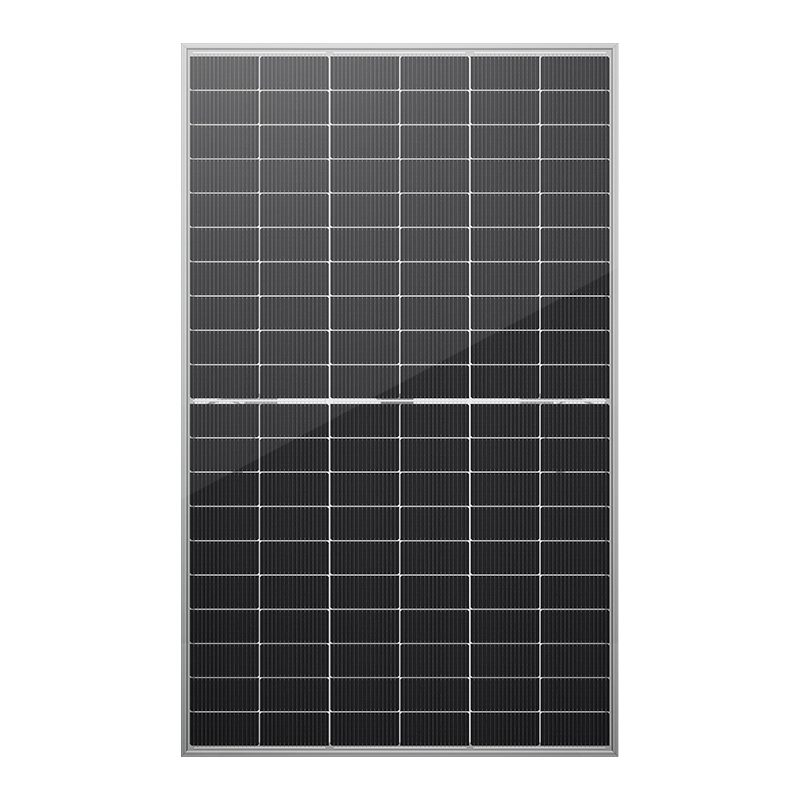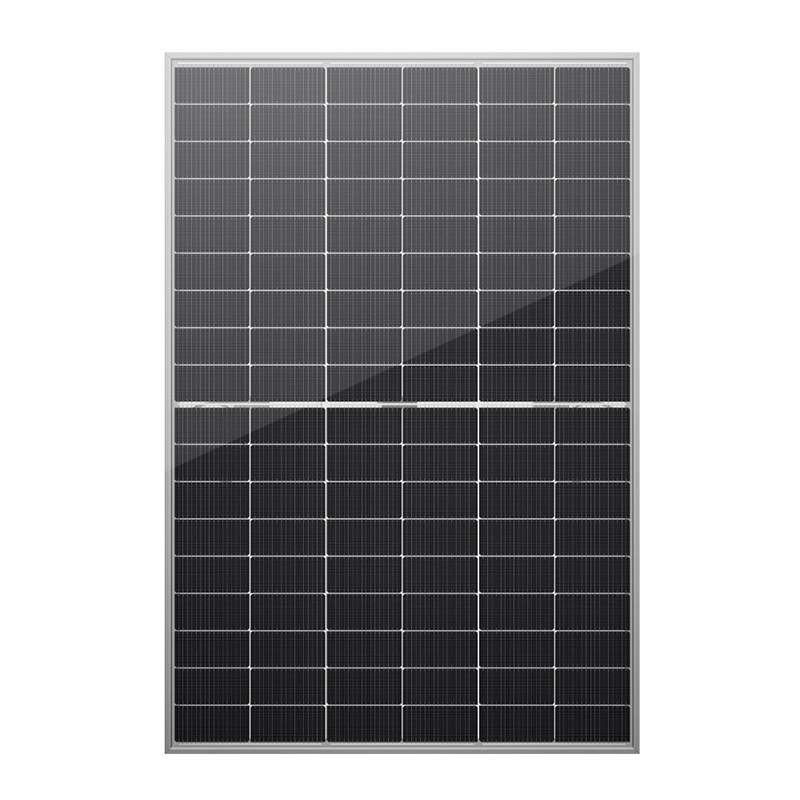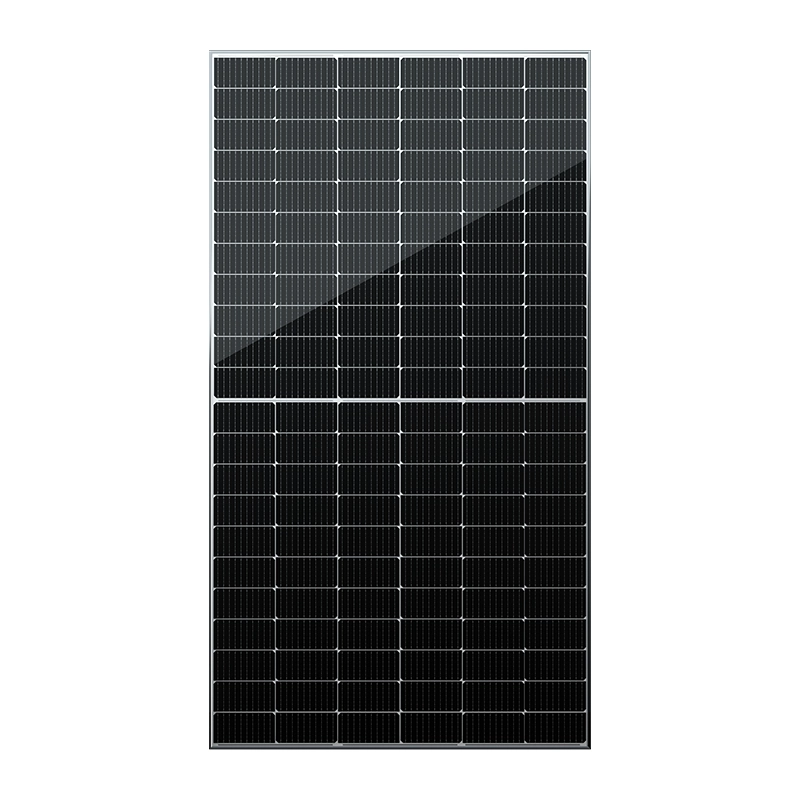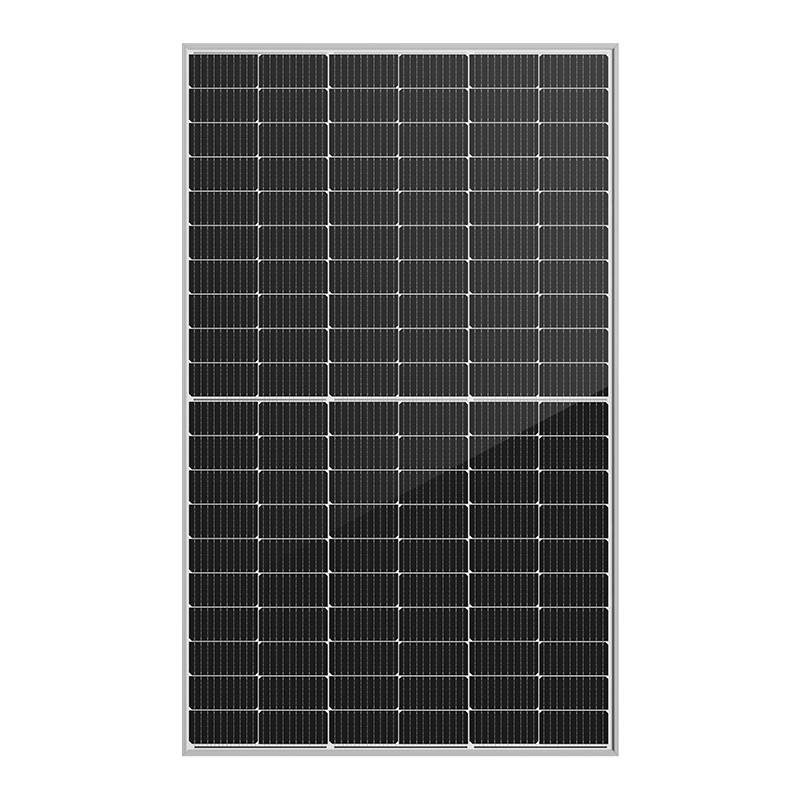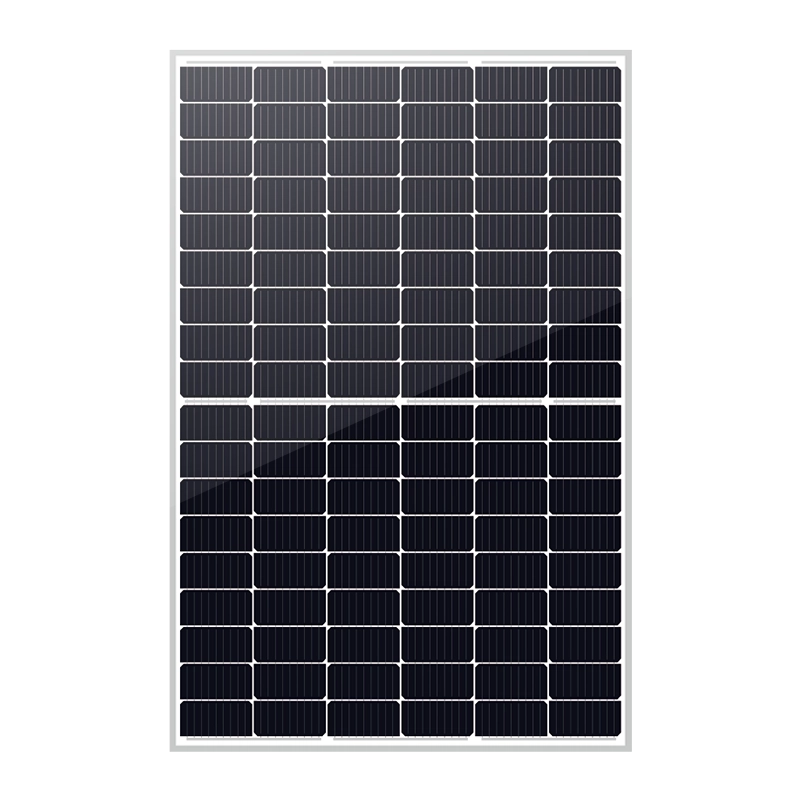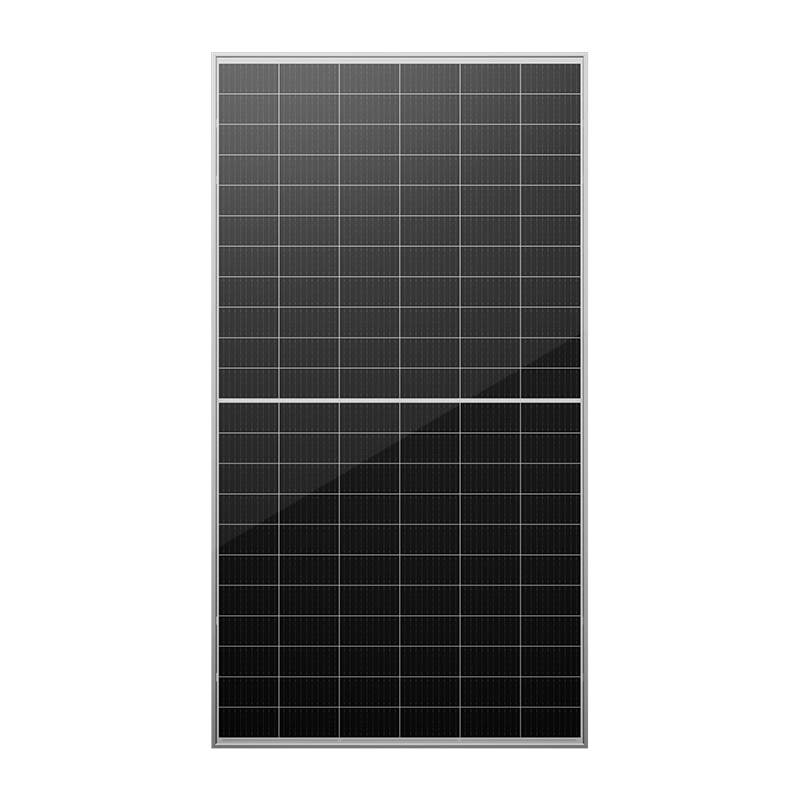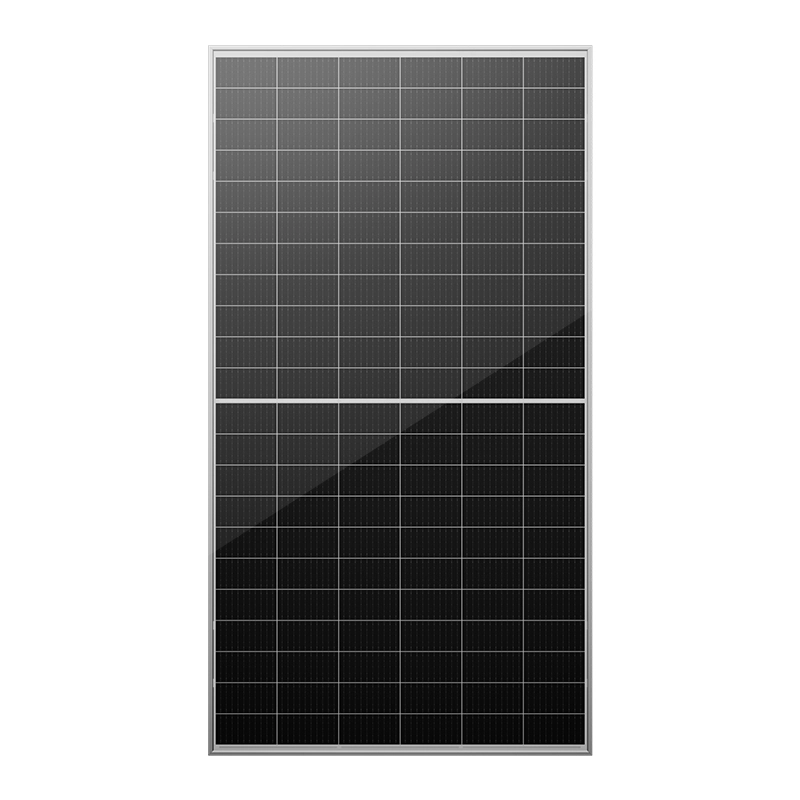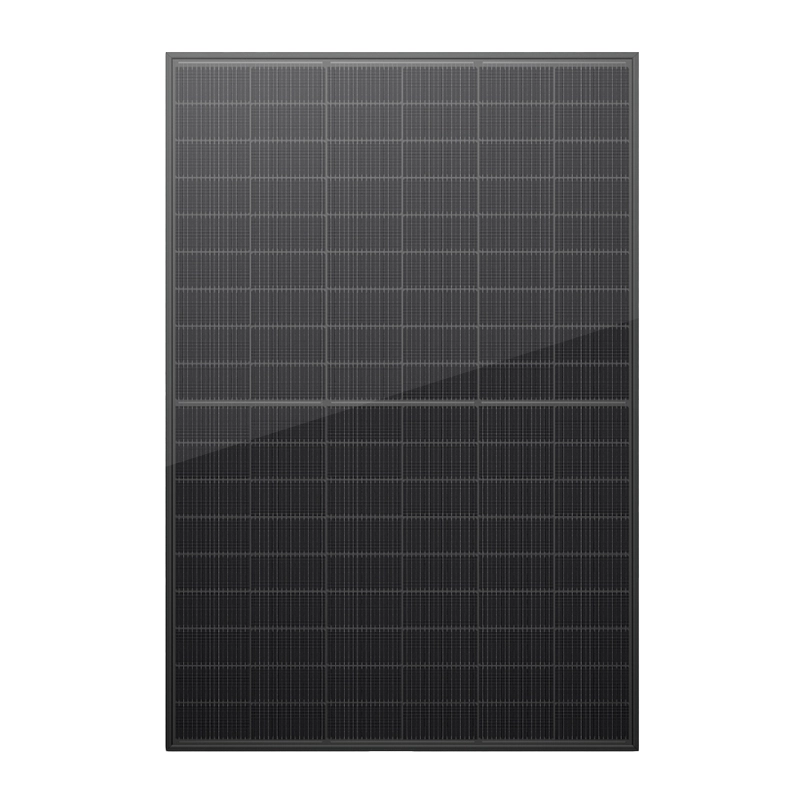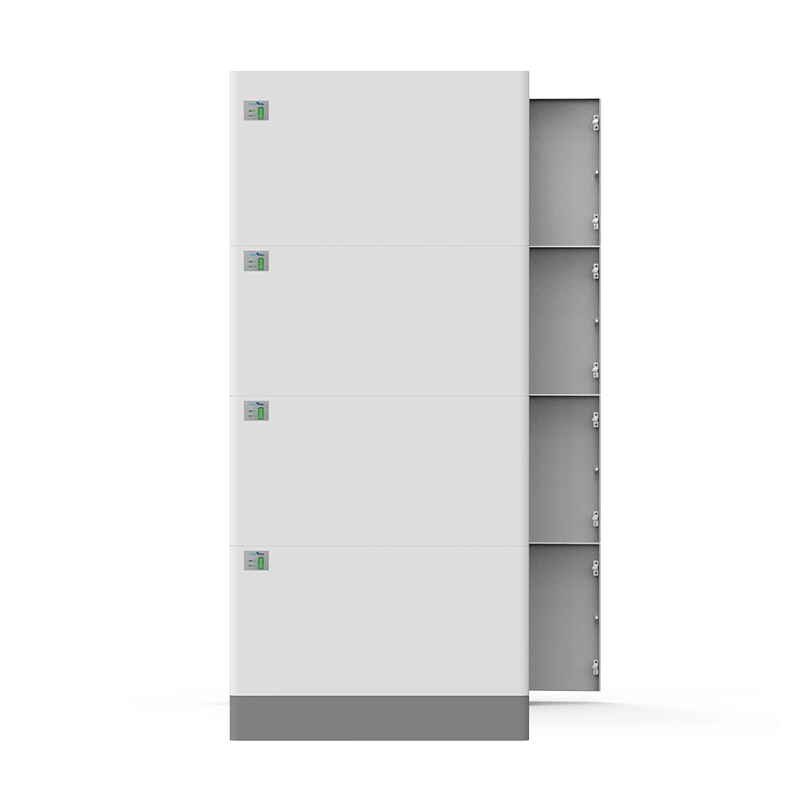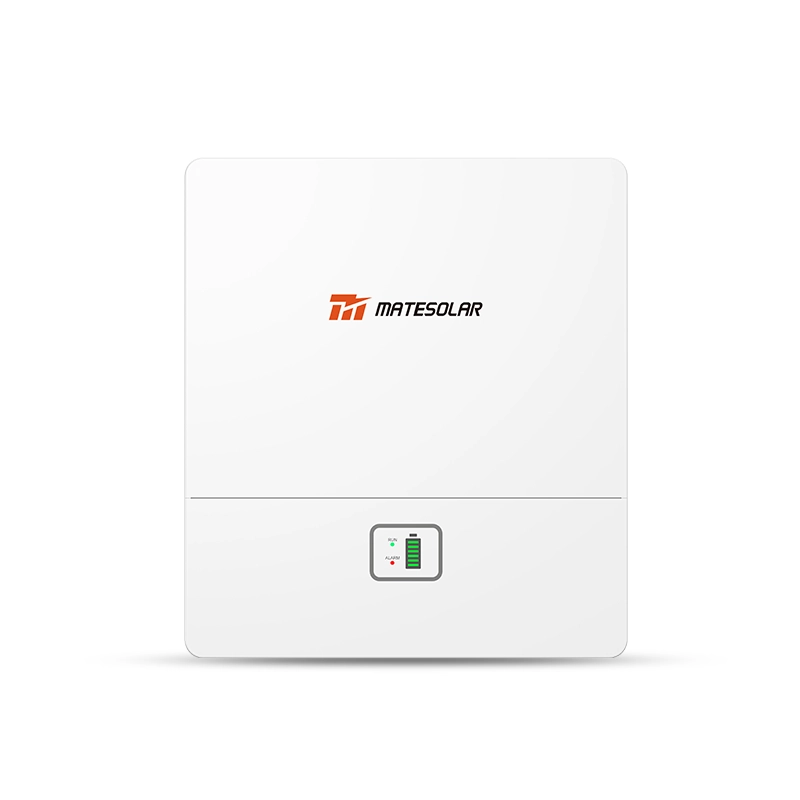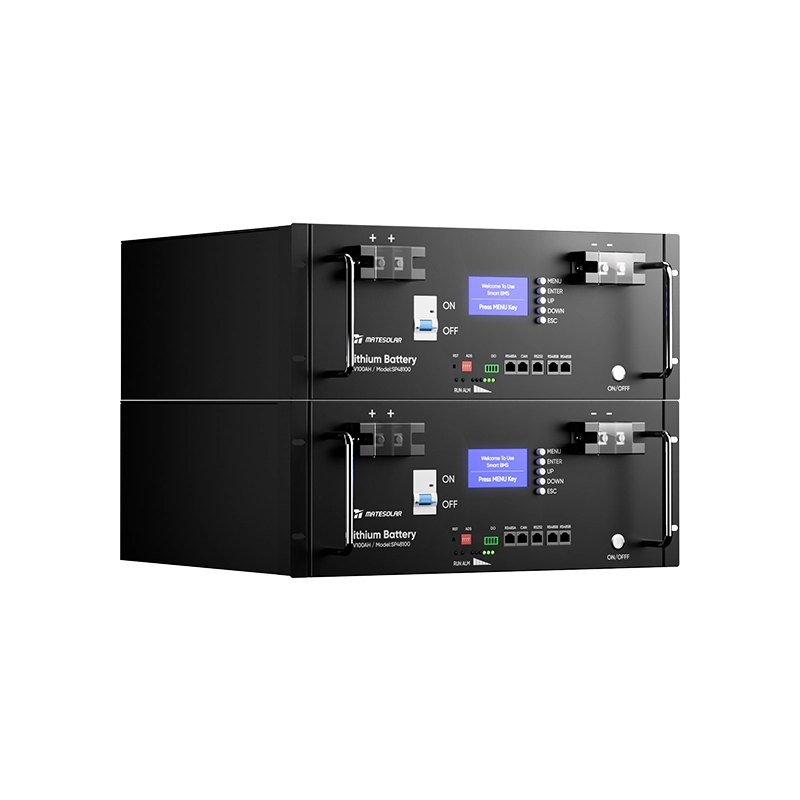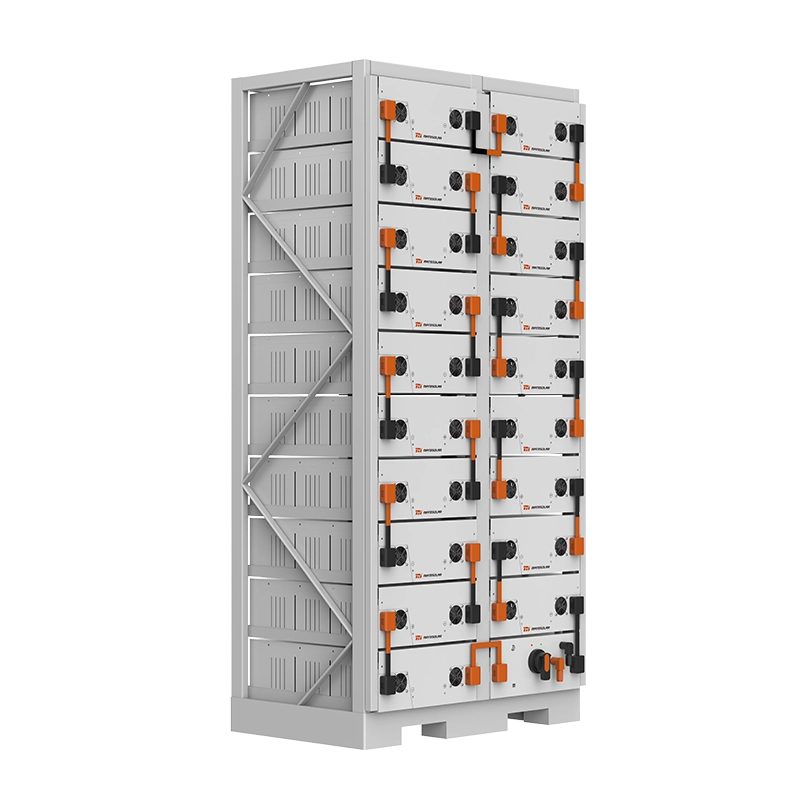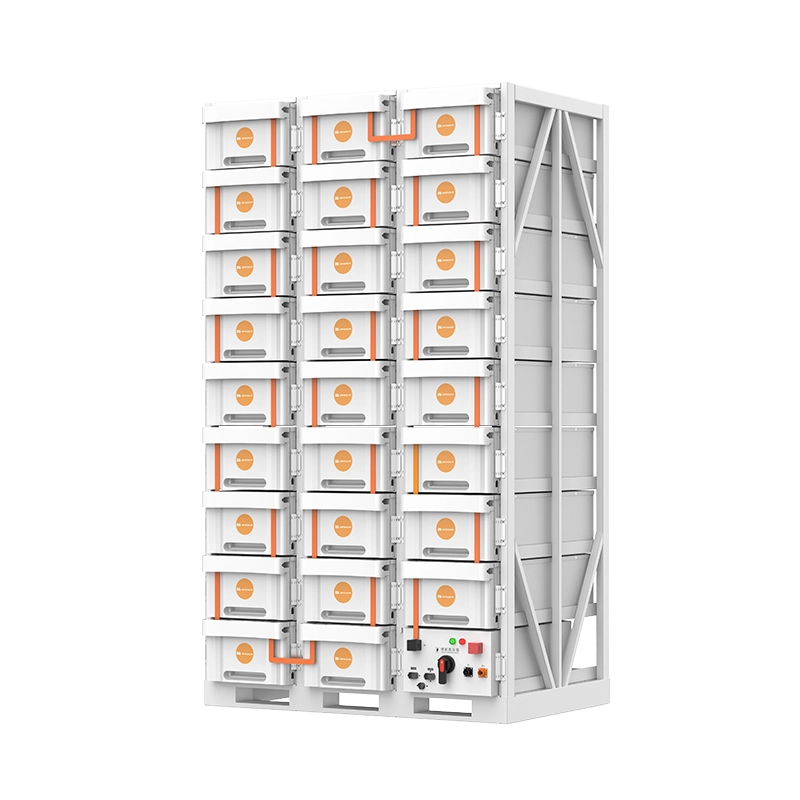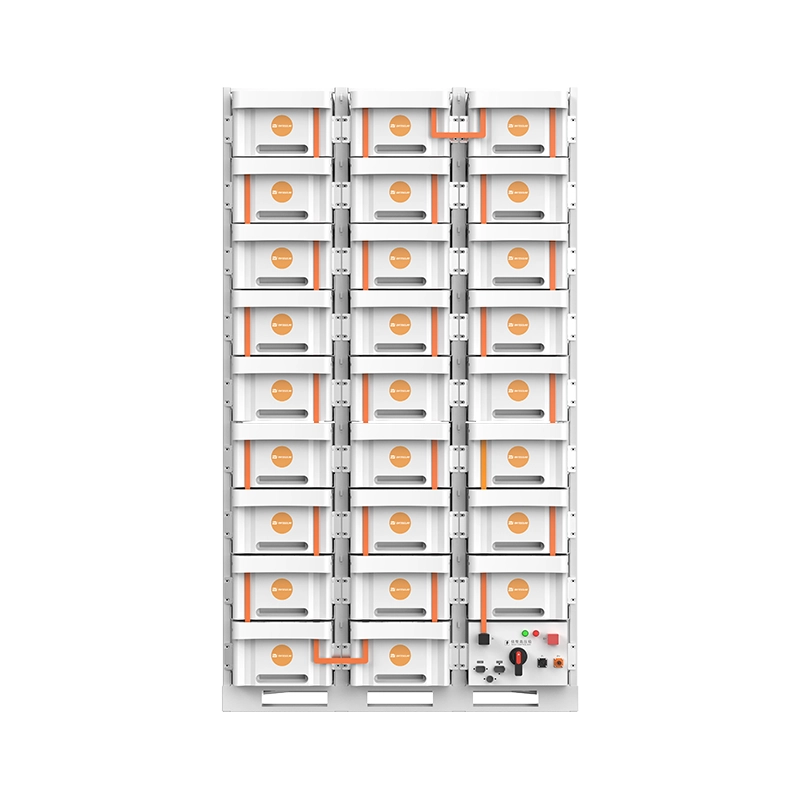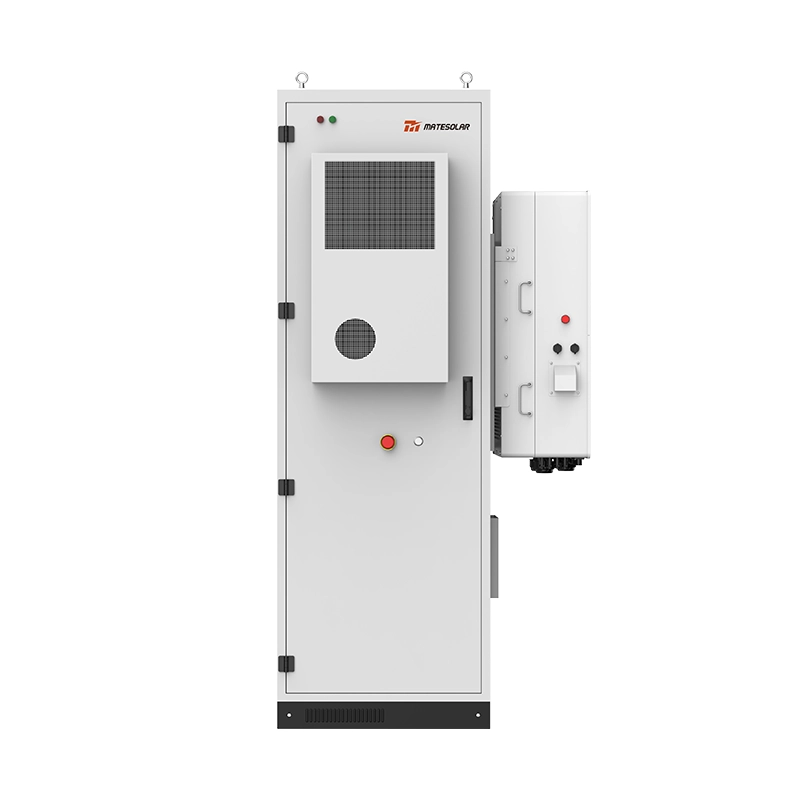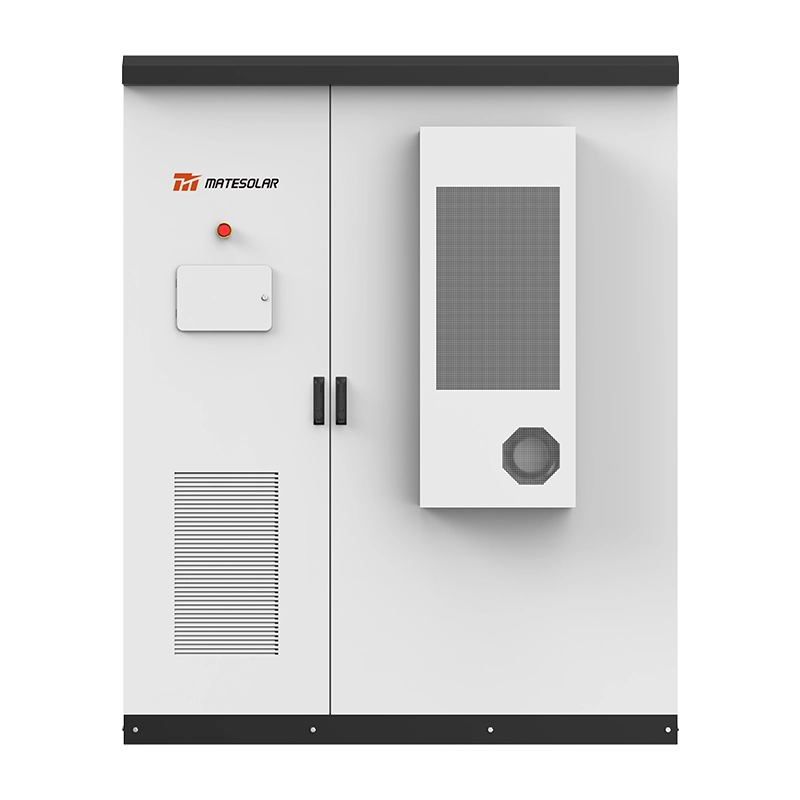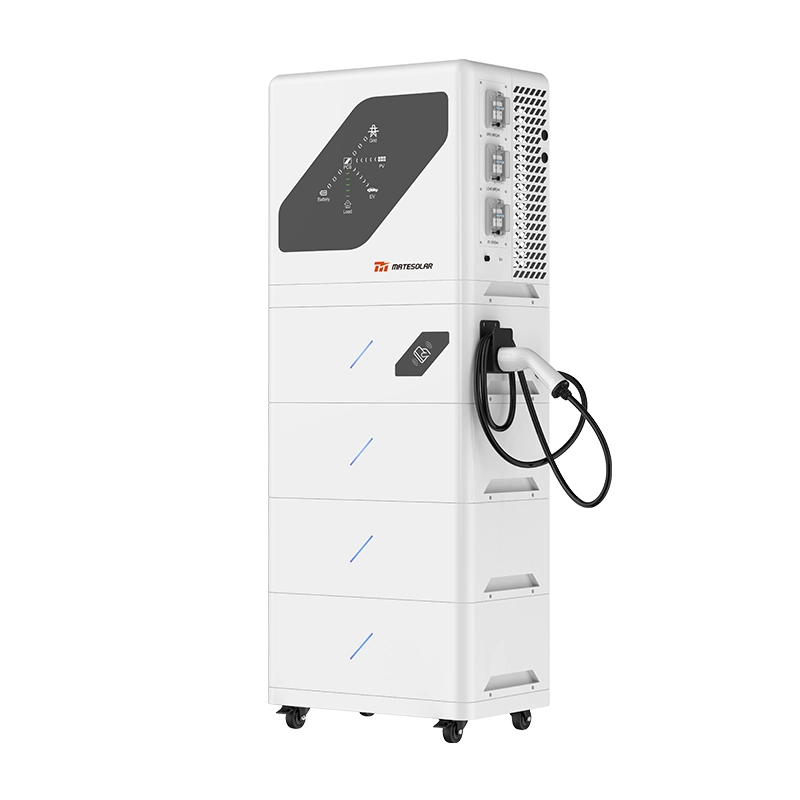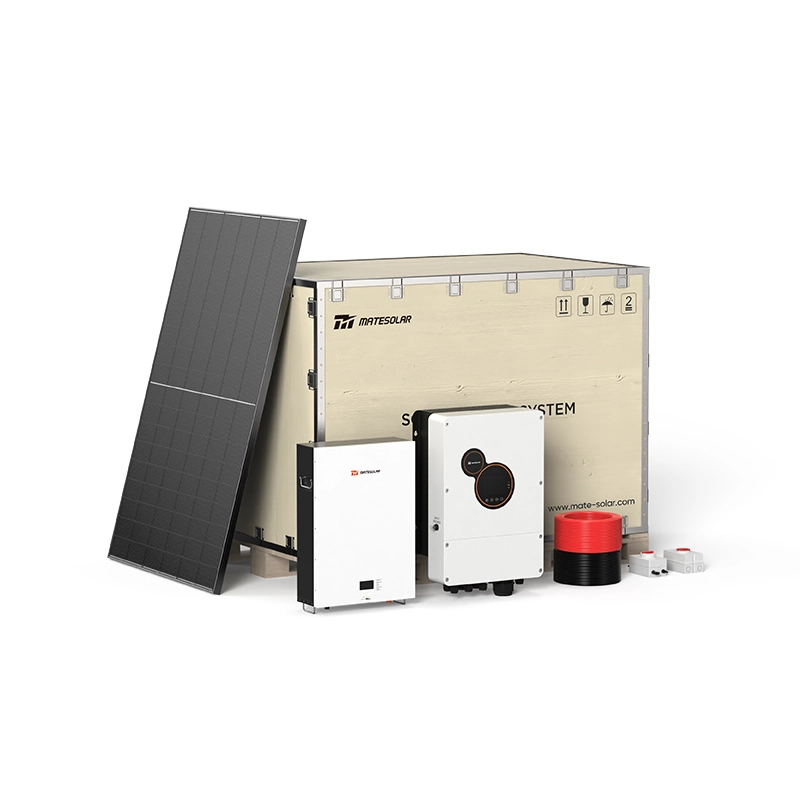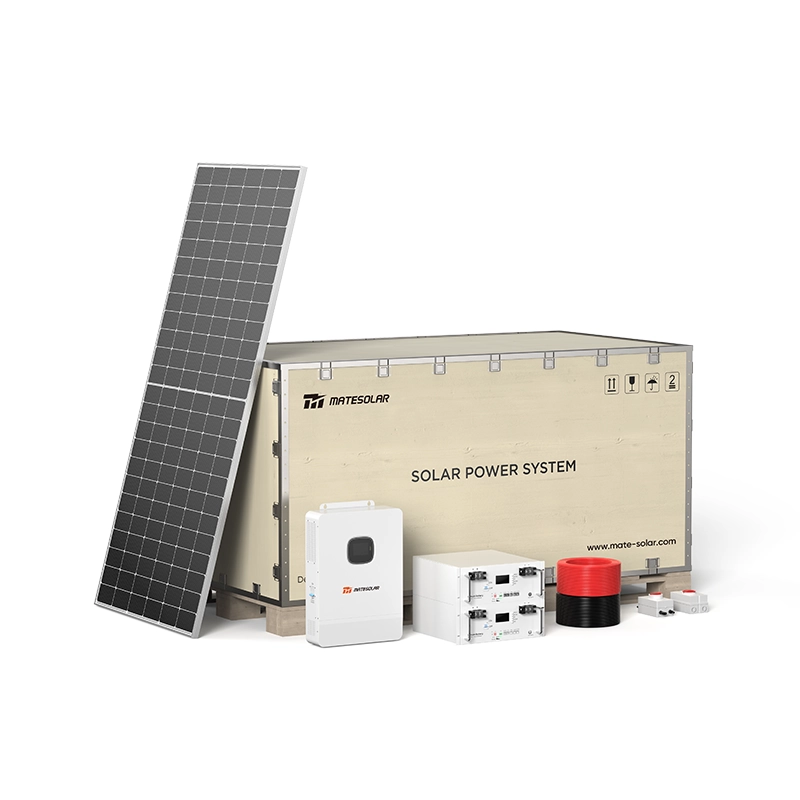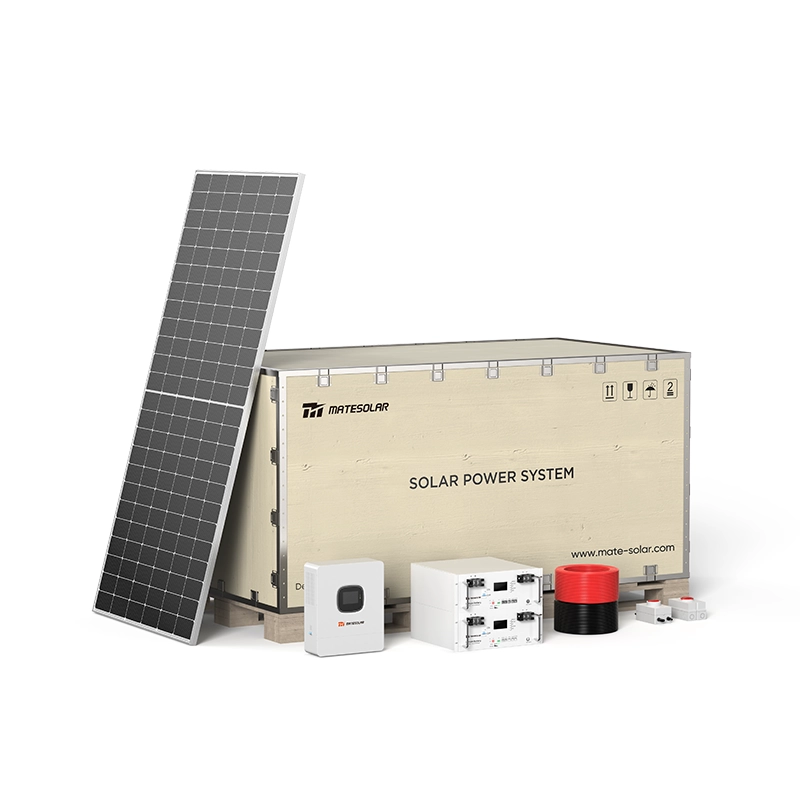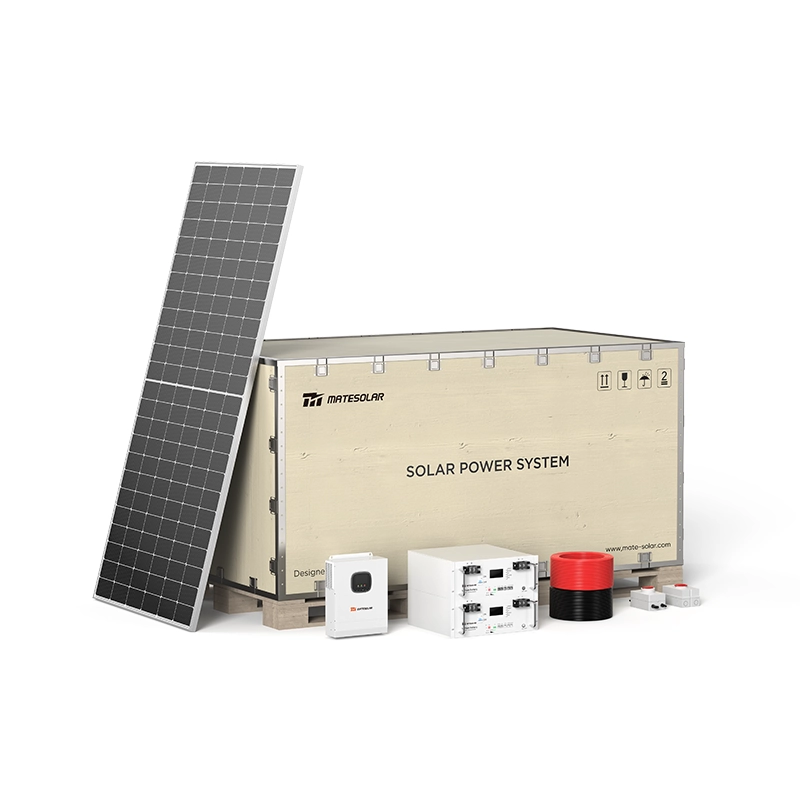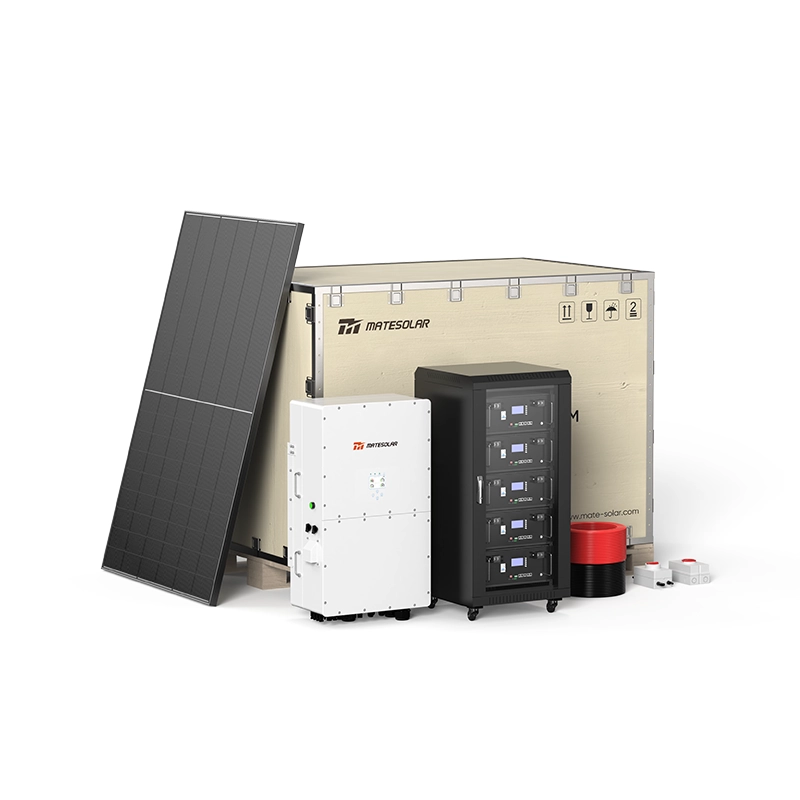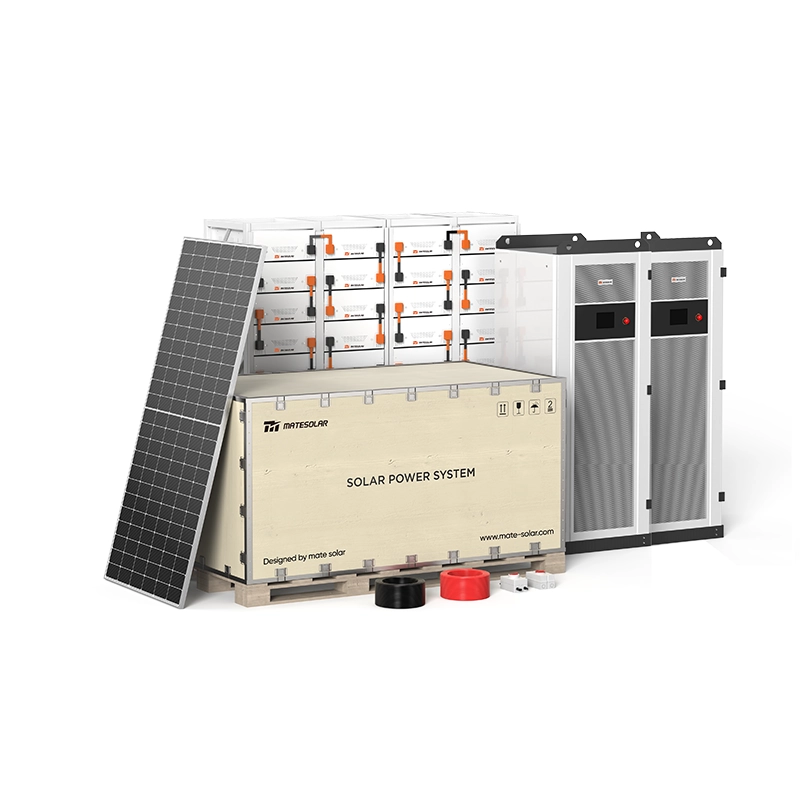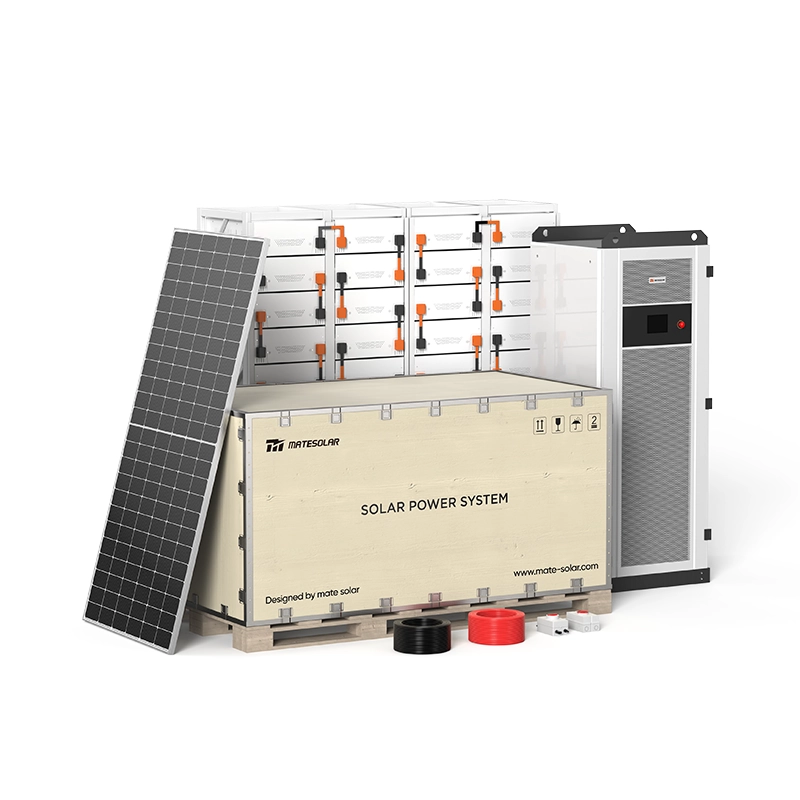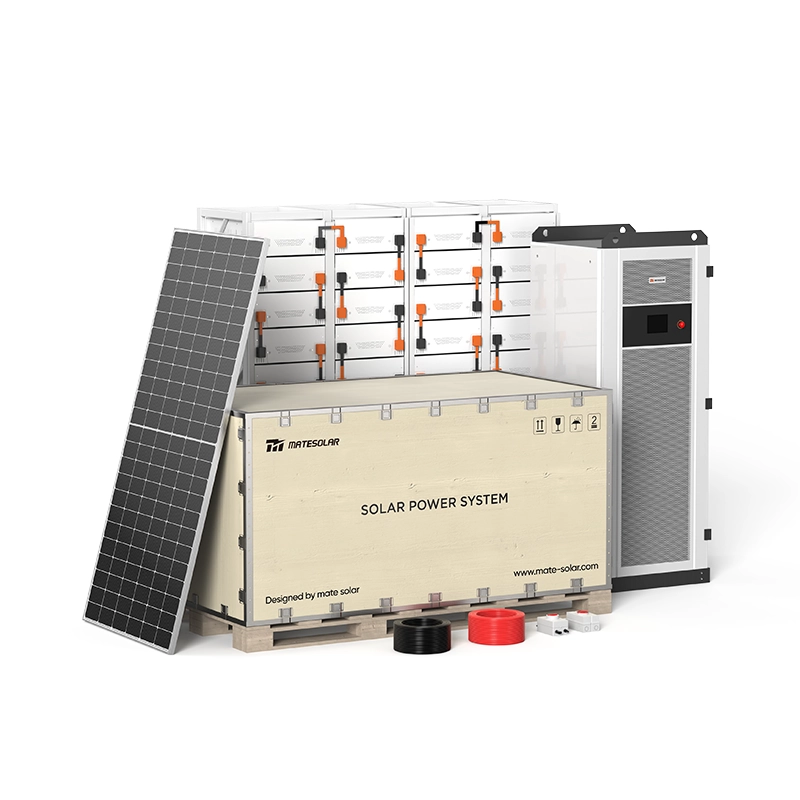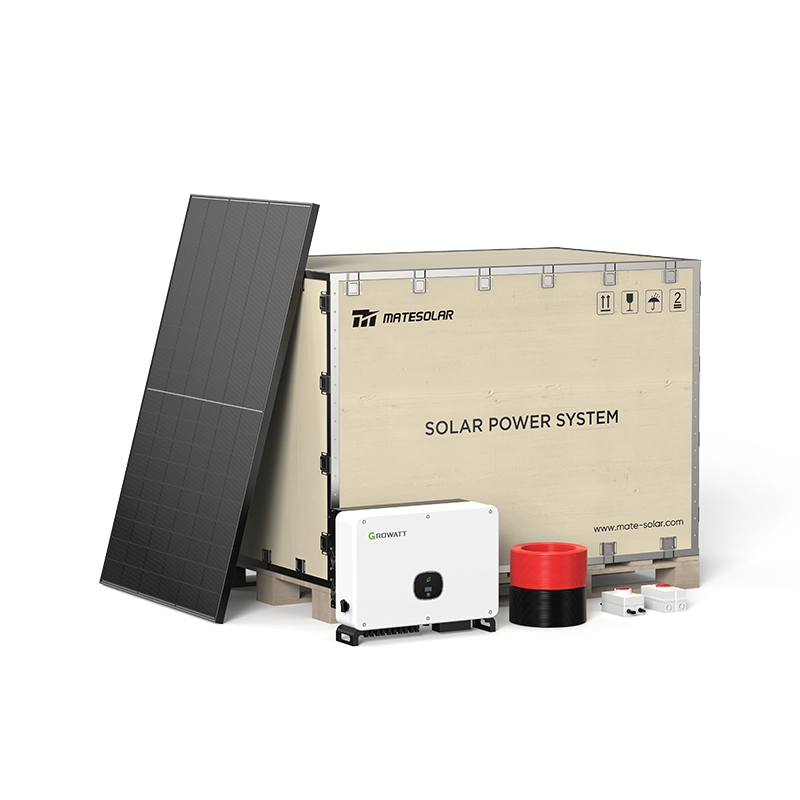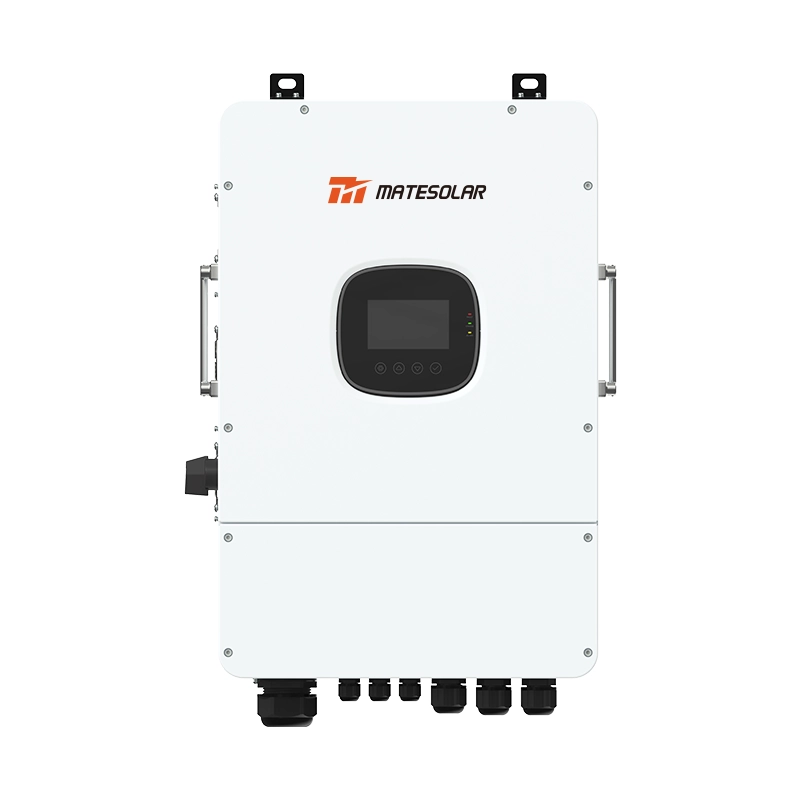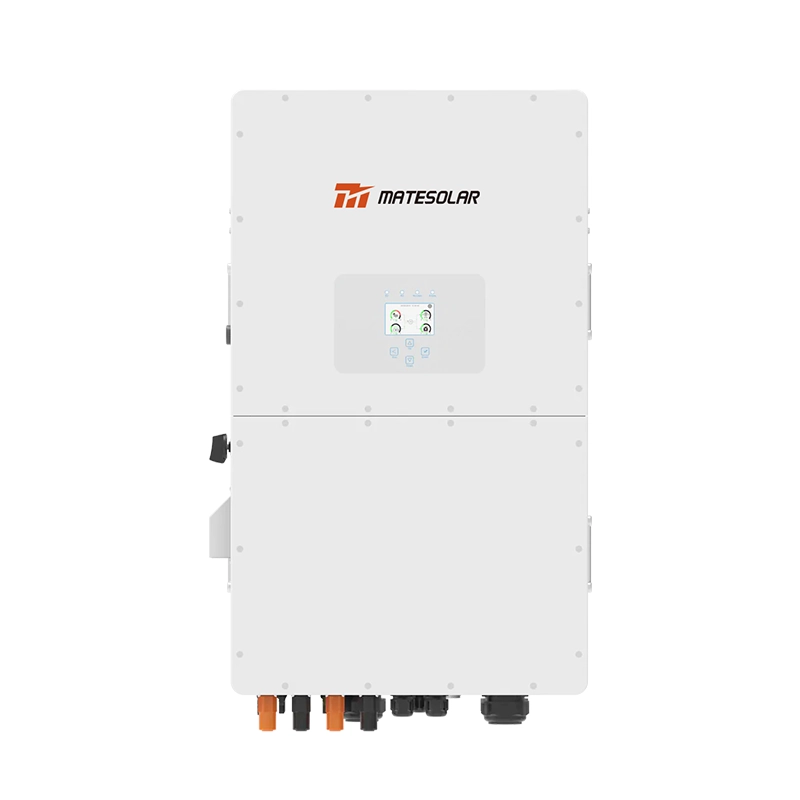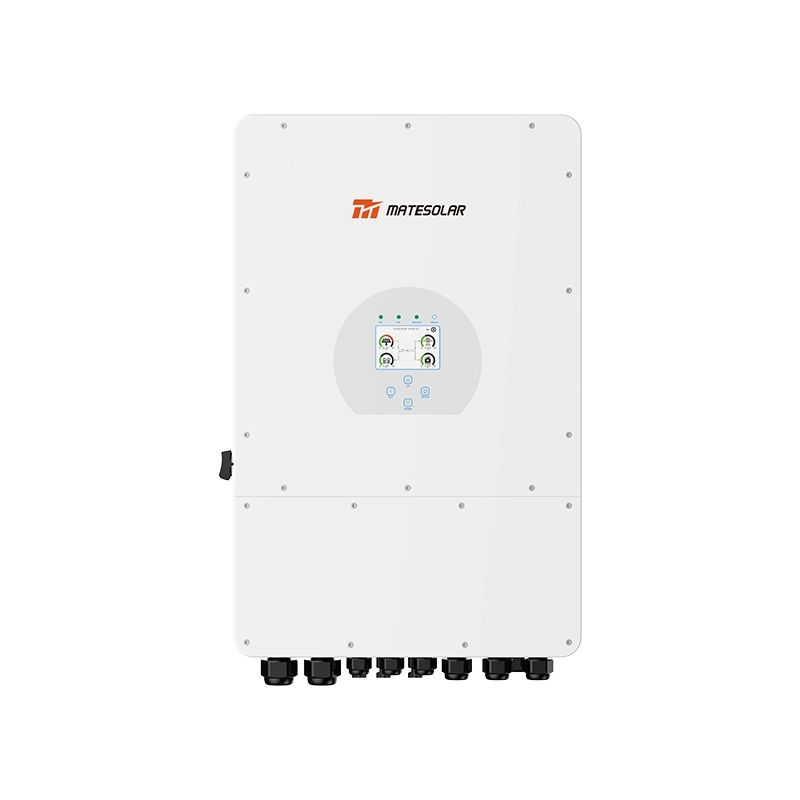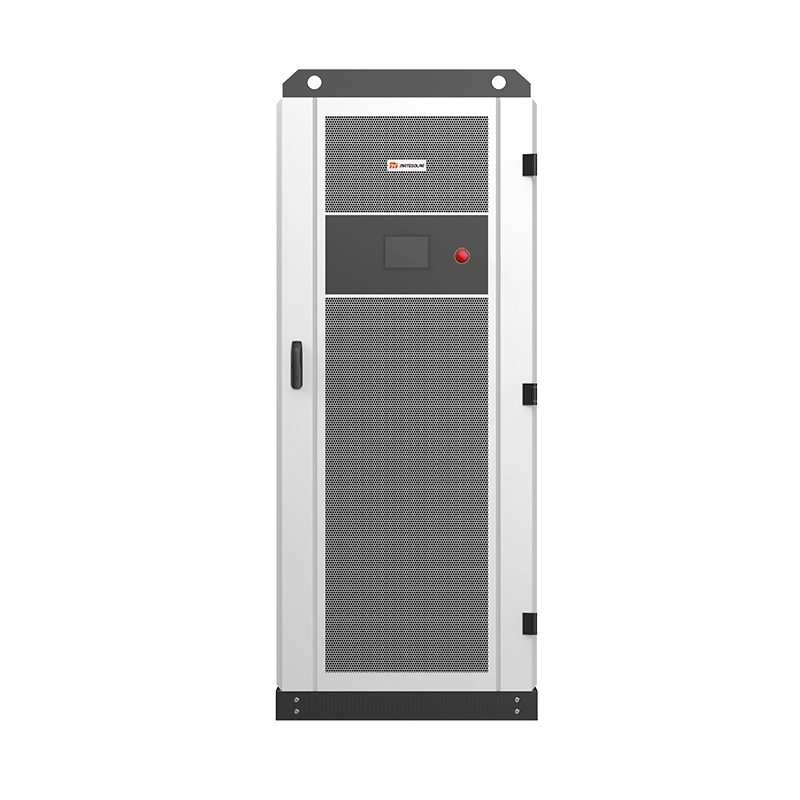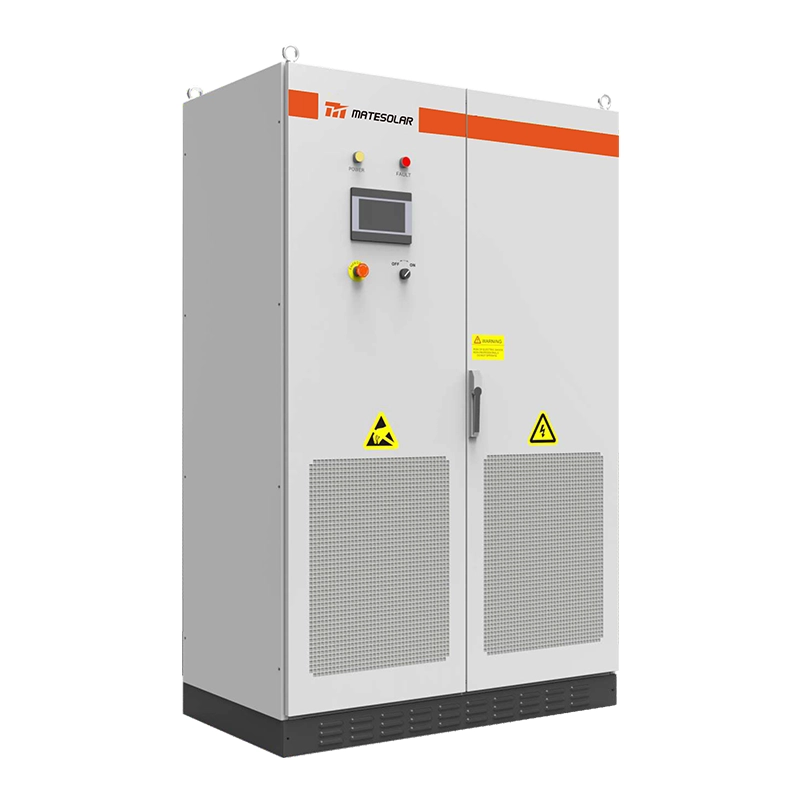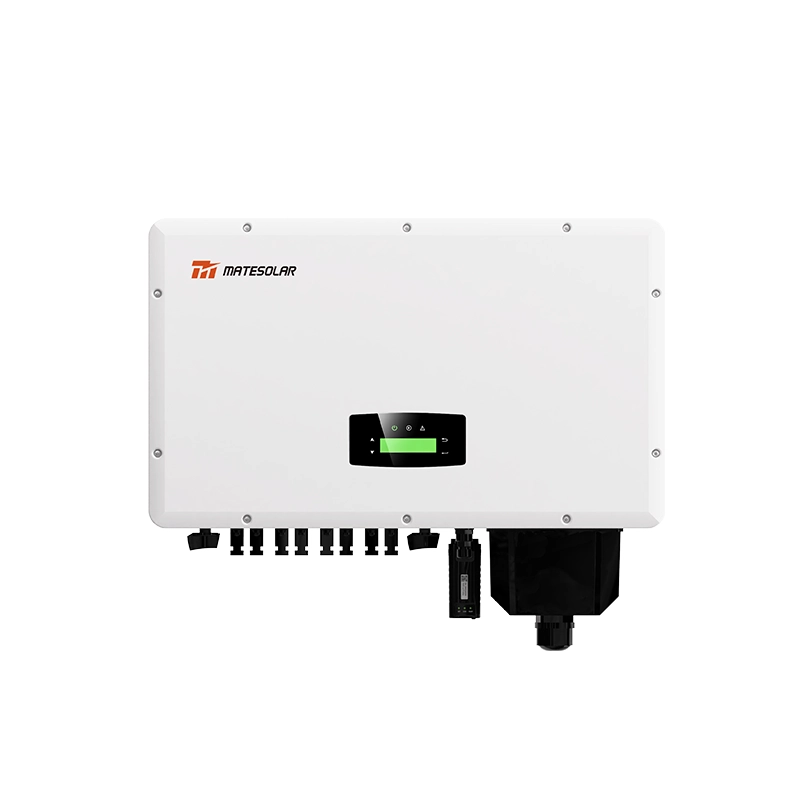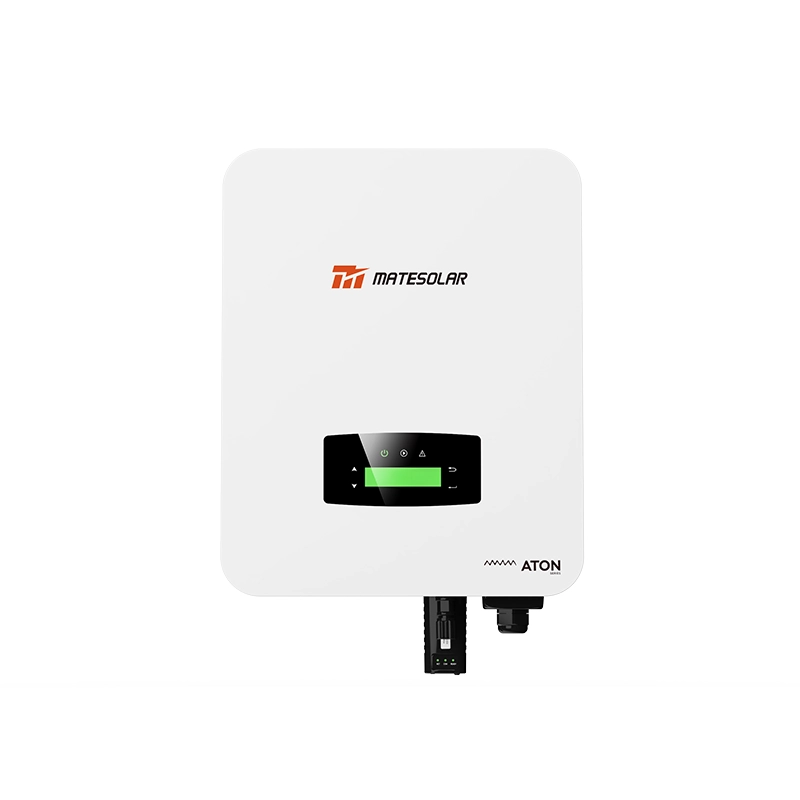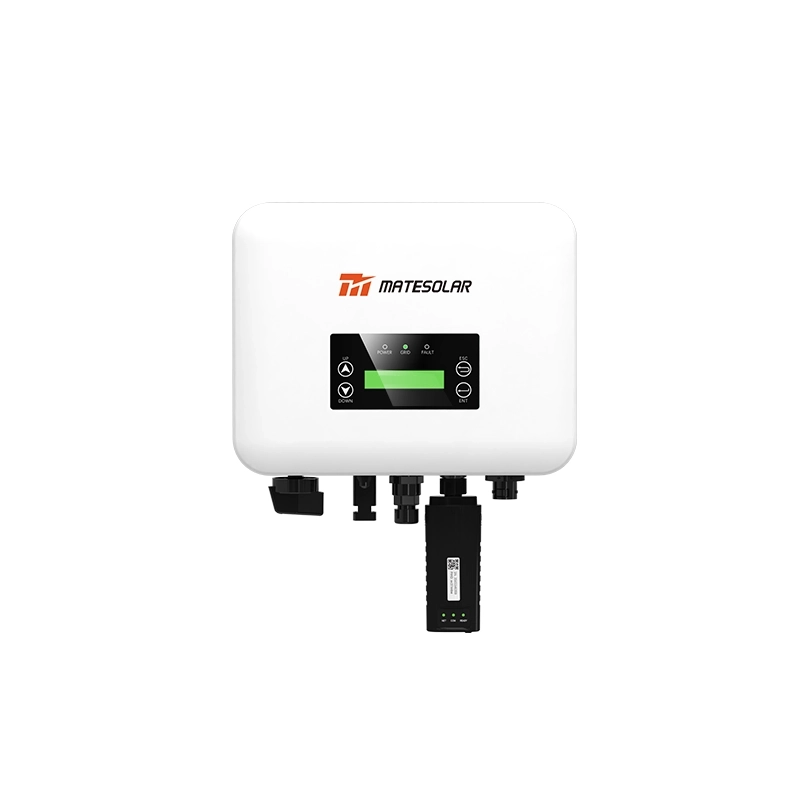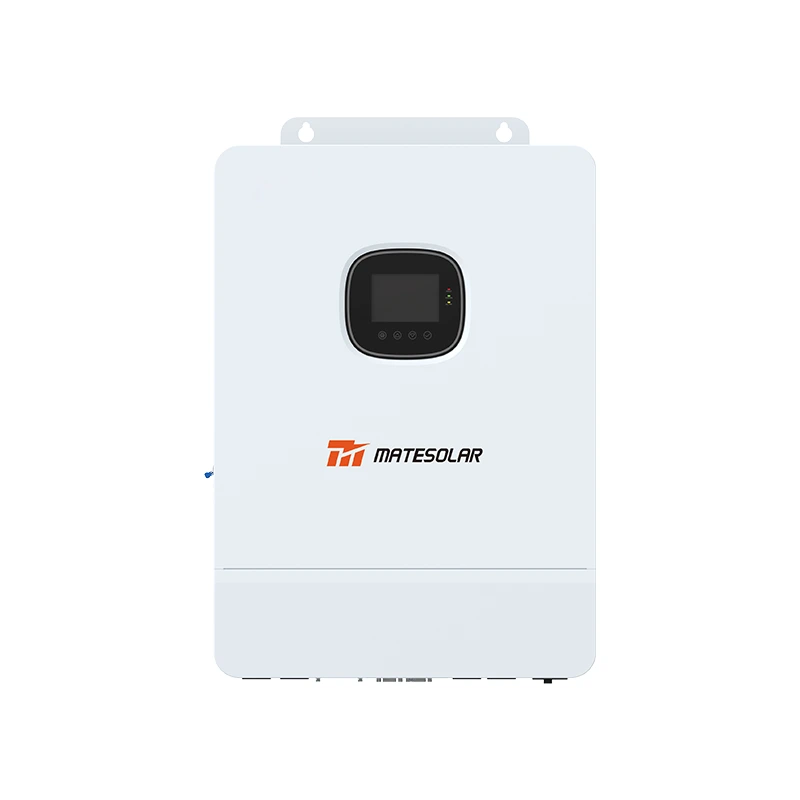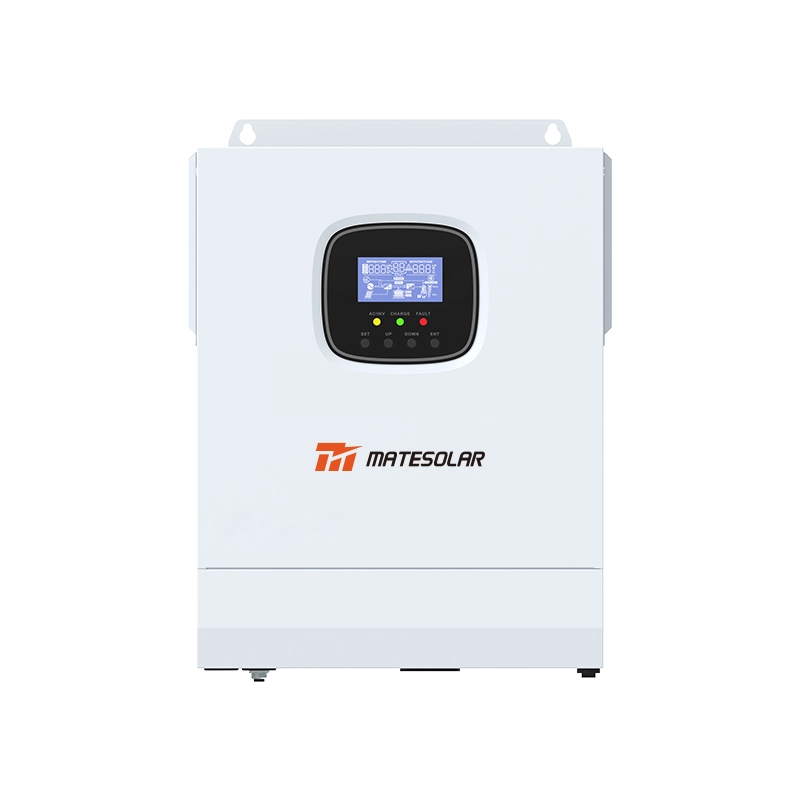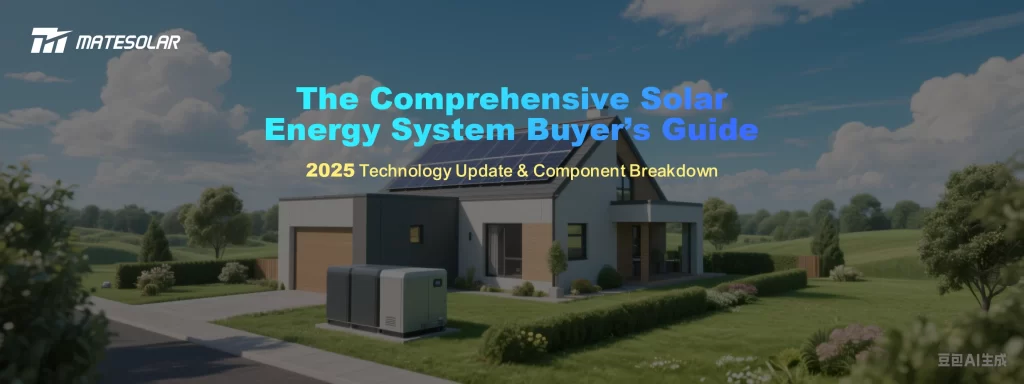
The global solar energy market is surging, with installations projected to exceed 1.5 TW by 2025 and distributed systems dominating >35% of new deployments. For first-time buyers, navigating the complex ecosystem of components—from breakthrough TOPCon panels to AI-driven grid management—requires expert guidance. Here’s a definitive breakdown of the modern solar energy system.
1. Core Component 1: Photovoltaic Modules – Beyond Efficiency.
Today’s panels blend high efficiency, durability, and bifacial gains. The shift from PERC to TOPCon and perovskite tandem cells has redefined performance benchmarks:
- N-type TOPCon cells: Dominate 2025 installations with >24.8% module efficiency (Jinko’s Tiger Neo 3.0 series) and 85% bifaciality, reducing LCOE by ~9%.
- Perovskite-silicon tandems: Achieve record 34.22% conversion efficiency (Jinko, certified by TÜV), with <5% degradation in extreme environments.
- Robustness enhancements: Anti-dust coatings, 0% light-induced degradation (LID), and mechanical stress resilience for desert/coastal deployments.
Table: 2025 PV Technology Comparison:
| Technology | Eficiência | Bifacial Gain | Degradation/Yr | Best For |
| TOPCon (N-type) | 24.8–26% | 85% | 0.4% | High-snow/high-albedo |
| HJT | 25.2–26.5% | 90% | 0.3% | Commercial rooftops |
| Perovskite tandem | 30–34.22% | 92% | <0.5%* | Arid/sunbelt regions |
Lab data; field validation ongoing.
Core Component 2: Storage Systems – Safety Meets Intelligence.
Lithium iron phosphate (LFP) batteries are now standard, but system design innovations prioritize safety and longevity:
- Five-layer safety protocols: From cell-level electro-thermal monitoring (e.g., Huawei’s AI early warning) to pack-level flame-retardant materials and system-level gas suppression.
- Liquid cooling dominance: Jinko’s SunGiga 520kWh C&I system uses liquid cooling for ±1°C cell temperature uniformity, extending cycle life to >8,000 cycles at 90% DoD.
- Rapid frequency response: Grid-forming inverters enable <100ms reaction to grid faults, critical for microgrids.
Table: Energy Storage Technologies for Residential/C&I:
| Parâmetro | Li-ion (NMC) | LFP | Lead-acid (Advanced) |
| Densidade energética | 180–200 Wh/kg | 140–160 Wh/kg | 60–80 Wh/kg |
| Cycle Life (80% DoD) | 4,000 | 6,000–8,000 | 1,200 |
| Round-Trip Eff. | 92–94% | 96–98% | 80–85% |
| Fire Risk | Moderate | Baixa | Baixa |
Data sourced from.
3. Core Component 3: Inverters – The Grid-Forming Revolution.
2025’s inverters transcend DC-AC conversion, becoming grid-stabilizing “brains”:
- Silicon carbide (SiC) adoption: GE Vernova’s 1.5kV Flexinverter platform cuts losses to <1.5%, operates at 50°C ambient temperatures, and shrinks size by 40%.
- True grid-forming (GFM) capability: Huawei’s FusionSolar 9.0 supports black start, SCR 1.0 weak grids, and seamless islanding transition—critical for 100% renewable microgrids.
- Multi-MPPT tracking: Up to 12 independent trackers per inverter (e.g., Huawei SUN2000), mitigating shading losses by ~25%.
4. Core Component 4: Balance of System (BoS) – The Unsung Heroes.
- Mounting structures: Robotic-driven single-axis trackers boost yield by 25–30% in high-DNI regions; floating solar systems hit 300MW/project in Southeast Asia.
- Smart controllers: AI-enhanced MPPTs (e.g., RedSun’s residential kits) harvest +15% energy in partial shading vs. PWM.
- Cabling & connectors: 1500V/2kV architectures reduce BoS costs by $0.02/W.
5. Expert Q&A: Addressing Buyer Concerns.
Q: How do TOPCon panels perform in low-light climates?
A: N-type cells exhibit ~1.5% higher daily yield vs. PERC under diffuse light (Germany/UK field data), thanks to lower recombination losses.
Q: Is LFP worth the 20% cost premium over lead-acid?
A: Yes—>90% round-trip efficiency (vs. 80%) and 3× cycle life slash LCoS by 40% over 10 years.
Q: Can solar power heavy loads like EV chargers?
A: With grid-forming inverters, yes. Huawei’s 9.0 system delivers 200% surge current for 3 seconds, supporting 11kW chargers.
6. System Integration & Smart O&M – The AI Edge.
- Digital twins: Huawei’s FusionSolar Agent cuts construction errors by 40% and boosts O&M efficiency by 50% via drone-based thermal scans.
- Virtual power plants (VPPs): Aggregated home systems in Germany/Australia generate $120–$200/year in grid service revenue.
- Component-level monitoring: Cloud platforms detect 90% of anomalies 7+ days pre-failure (e.g., string-level arc faults).
7. The Future Is Integrated: Why Holistic Design Wins.
The era of piecemeal solar is over. Winning solutions combine:
- TOPCon-LFP-GFM trinity: Maximizes self-consumption, grid resilience, and ROI.
- AI-native operation: From site design (irradiance/demand forecasting) to automated trading (energy price arbitrage).
- Standardization: IEC 62941-compliant systems lower permitting time by 30%.
MateSolar: Your Partner in Energy Independence.
At MateSolar, we fuse cutting-edge TOPCon panels, military-grade LFP storage, and grid-forming inverters into solutions. With global supply chain resilience and 24/7 smart monitoring, we deliver not just systems, but lifetime energy sovereignty.
Engineered for tomorrow. Installed today.
Explore MateSolar 10kW Home System with 40kWh Storage: 98% Self-Sufficiency Guaranteed.





